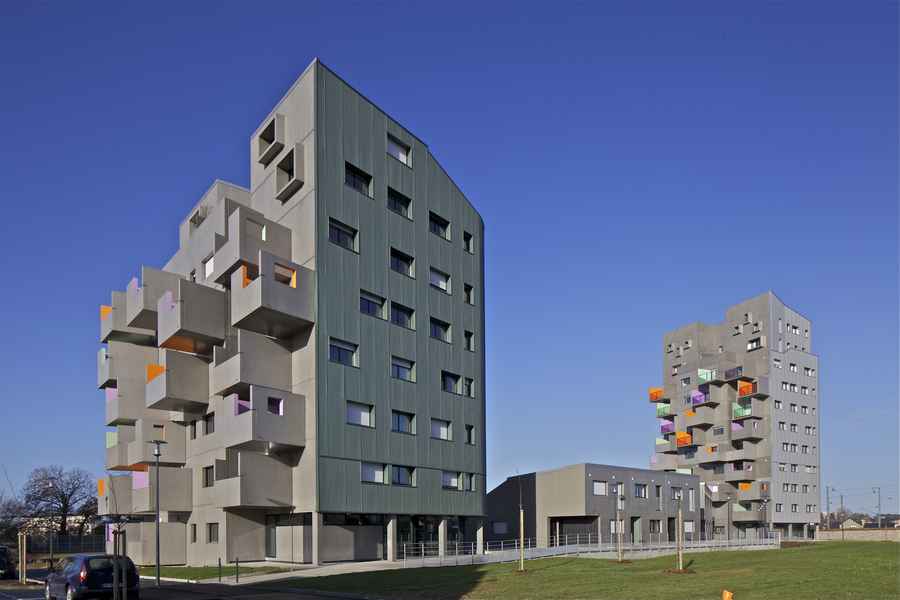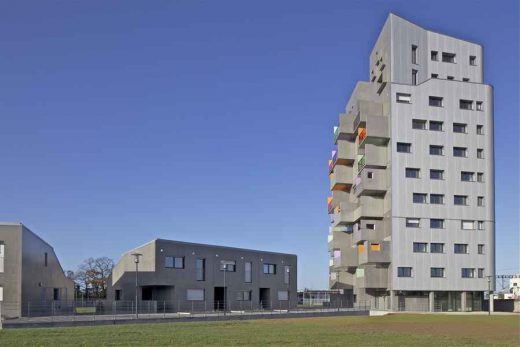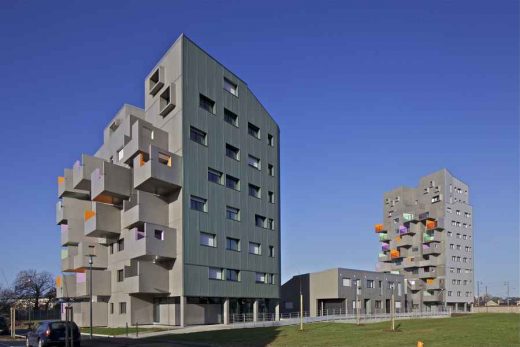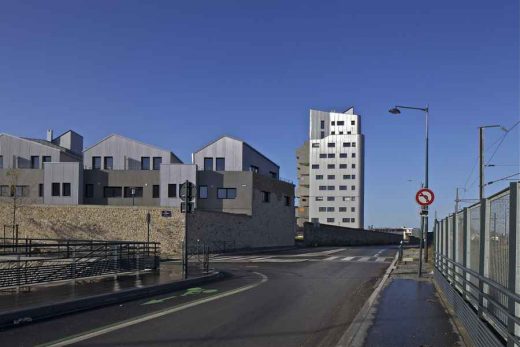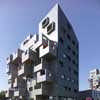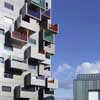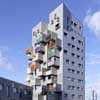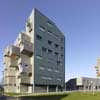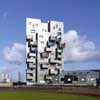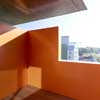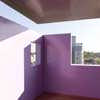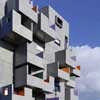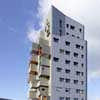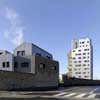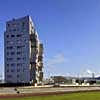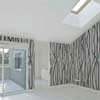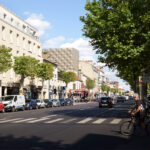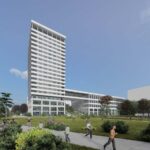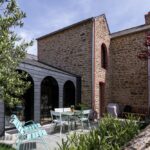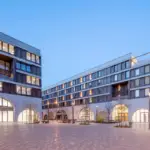Housing Rennes, BH2 Residential Building la Courrouze, France, Architect, Architecture Images
Housing in la Courrouze: Rennes Residential Building
Rennes Homes, France property design by Philippe Gazeau Architecte
9 + 4 Jul 2012
Housing Rennes Courrouze
Design: Philippe Gazeau
76 Logements / Housings
Housing Rennes Courrouze photos: Philippe Ruault / Stéphane Chalmeau
The programme in the context of the Zac de la Courrouze, at Rennes:
The BH2 programme is located at the north-east end of the ZAC mixed development zone, in the “Bois Habité” area. It is bounded by the Rue Claude Bernard to the east, and by the Boulevard de Cleunay to the north.
The immediate vicinity:
To the south of the programme there is a recent housing estate made up of small collective housing units of between R+1 and R+3. There is a difference of about one metre between the levels of the existing housing estate and the land.
To the west of the land, the existing sports ground is being kept, and included in the public parkland bordering the operation, and linked to it by footpaths.
To the north, the shale wall left standing defines a solid, enclosure-type boundary with the Boulevard de Cleunay. On the other side of the Boulevard de Cleunay there is a railway line, which is a source of noise pollution near to the land.
To the east, the shale wall demolished during the work to widen the Rue Claude Bernard will be rebuilt along the new boundary. As former military wasteland occupied by large workshops, the current land is flat overall and the landscape elements and the vegetation existing on the land are of no particular interest.
This project offers morphological and typological diversity around a large shared garden. The great height of some of the buildings means that ground can be made available for a garden that federates all the constructions.
The free layout obtained through the “campus” concept is used to optimise the environmentally-friendly quality and performance of the adopted solutions, and in particular the layout of the constructions with respect to their orientation, the treatment of the well exposed frontages, and the urban composition with respect to the urban landscape both in the immediate vicinity and further afield.
The taller tower block is located in the northern part of the land and does not cast a shadow on the other buildings. Its position on the edge of the site justifies the building’s outline as a tall signal.
The two high-rises share a semi-underground car park and are joined together by its terrace roof forming a common plaza. The terraced houses are set on this walkway slab. This architectural and urban arrangement made up of the two towers and the terraced housing forms a constructed sequence between the large central garden and the landscaped area of the former stadium. These two broad open landscaped spaces leave a clear view from the lower housing units.
Each building offers a particular typology suited to its location, orientation and height, so as to get the best out of it in terms of housing unit comfort. The freer layout of the two tall buildings makes for highly effective optimisation of the orientation and exposure of the frontages. The north front is the narrowest exposed surface area and the south front is the widest.
In the two tower blocks, whose south fronts are spiked with protruding boxes, the living rooms of the housing units open up broadly to the south of the ZAC through loggias/terraces. These excrescences are veritable outside extensions to the living space, protected on the sides with walls up to half-height to cut down noise, wind and sunlight.
The treatment of the three other facades and the top is handled in different ways from one tower to the other, taking into account their height and site location and with respect to the surrounding landscape:
The North tower block, the taller one, is the most imposing in the distant urban landscape, in particular from Rennes city centre. This is why the top section is different, the last two floors having special volumetry: pulled back from the main body, creation of a kind of parapet walk.
These architectural arrangements assert the desire to turn towards the city and its centre, even though due to the orientation and the noise pollution from the railway line the north facade is less opened up and more height is given to the south facade, thereby giving the tower a rather unusual skyline. The tower’s main body is wrapped on the north, east and west facades in a smooth, shiny mantle of vertical metallised ribbed cladding covering insulation on the outside of the building structure, in contrast with the more sculptural, mineral appearance of the south facade. On the ground floor, the tower fuselage is set on a brick base on the plaza ground or on the slightly sloping ground of the grassy areas.
The South tower block, which is lower and less slender in its proportions, has a dissymmetrical fuselage, thinner to the east on the inner garden side, broader to the west on the ZAC park side. This differentiation between the east and west facades is also emphasised in the colour of the casing of vertical ribbed cladding which wraps around and insulates the north, east and west facades.
The treatment of the south facade, and the ground floor base, are the same as on the first tower block. The rake on the fuselage is continuous all the way up to the sloping ridge. Any different treatment on the last two storeys would have had the effect of making the tower look stockier, being less tall than the other.
The volumetry of the six housing units at the foot of the tower blocks is similar to a typology of houses grouped in threes. They are one-storey houses with sloping roofs opening widely onto the ZAC park, with an east-west exposure so that the two towers bookending them to the north and south will not spoil the view or block the sunlight.
Along the Rue Claude Bernard the housing units between the central garden and the old shale wall left standing have continuity of scale with the existing programme to the south, and a degree of volumetric freedom with respect to the other buildings in the operation. It is a predominantly horizontal construction comprising a strip of terraced, superimposed duplex apartments.
Sited at the interface between the street and the inner garden, the small block is set away from the noise of the street and the new shaft, opening up broadly onto the garden. On the second floor level, a succession of gabled volumes, slightly set back from the main R+1 building, produces an effect of houses set on a shared terrace roof. Likewise, on the west side, on the ground floor of the private gardens, the coloured boxes of the kitchens projecting out from the linear volume give a homely scale to the whole.
The two ends of the small block have been given unusual volumetric treatments, with corner articulation for the north part, and the operation’s entrance door for the south part, according to their special siting with respect to the urban context and their position in relation to the other buildings.
Housing in Rennes – Building Information
Location: Rennes (35), la Courrouze
Programme: label THPE / very high energy efficiency label
Client: SNI Grand Ouest
Surface / area: 6,400 m²
Coût / cost: 7 317 000 € HT
Housing Rennes Courrouze images / information from Philippe Gazeau
Location: la Courrouze, Rennes, France
New Buildings in France
French Architectural Projects
French Architect Offices – design firm listings
Paris Architecture Tours by e-architect
Philippe Gazeau
English text (scroll down for French):
Philippe Gazeau founded his architecture agency in 1984 in Paris, after graduating as registered architect (DPLG) at the Paris la Villette school of architecture. In 2004, he created the urbanism agency FGP(u) – French Global Project of urbanism – of which he is the associate manager. He teaches at the Paris Val-de-Seine Ecole Nationale Supérieure d’Architecture. He is a member of the French Touch association.
French text:
Philippe Gazeau fonde son agence d’architecture en 1984 à Paris, après avoir obtenu son diplôme d’architecte DPLG à l’école d’ architecture de Paris la Villette. Il crée en 2004 l’agence d’urbanisme FGP(u) French Global Project, dont il est associé-gérant. II est enseignant à l’école Nationale Supérieure d’Architecture de Paris Val-de-Seine. Il est membre du collectif French Touch.
New Buildings in Rennes
Rennes Competition for a New Residential Tower
Design: Team JDSA with local architects Maurer & Gilbert and Paris offices SMAC and Think Tank
Rennes Residential Tower Competition
Church of Saint-Jacques de la Lande
Architects: Alvaro Siza Vieira
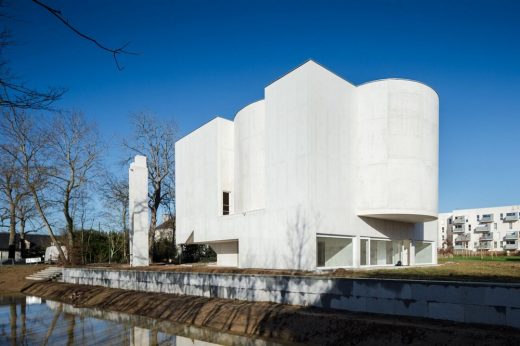
photo : Joao Morgado
Church of Saint-Jacques de la Lande Rennes building
Cité Internationale Paul Ricœur
Design: Hérault Arnod Architectes
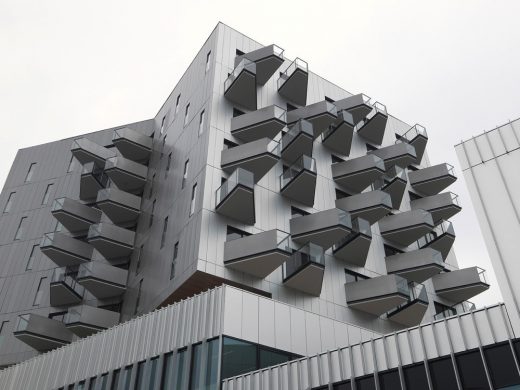
photography : André Morin
Cité Internationale Paul Ricœur in Rennes
Ecomuseum Rennes
Guinée*Potin Architects
Ecomuseum Rennes
Multiplex Europalaces Gaumont Rennes
Atelier d’architecture Christian de Portzamparc
Multiplex Rennes
French Architecture – Selection
Zenith Music Hall Strasbourg
Massimiliano Fuksas Architecture
Zaha Hadid Architects
Comments / photos for the Housing Rennes Courrouze design by Philippe Gazeau Architecte page welcome
Website: Rennes France

